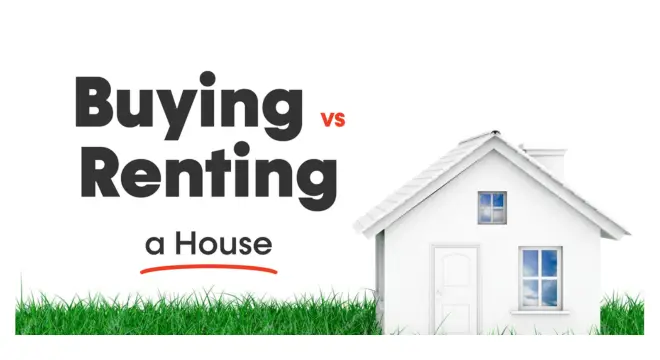North Carolina’s Top 10 Cities With the Biggest Home Price Increases in 2025
If you’ve been watching the North Carolina housing market in 2025, you already know—it’s not slowing down. While big metros like Charlotte and Raleigh are grabbing headlines, the real action is happening in places most folks weren’t even looking at five years ago.
I’ve spent weeks digging through the latest Redfin and local news data to uncover which cities are actually seeing the biggest jumps in home prices. Some of the names on this list might surprise you. And if you’re a buyer, investor, or even just curious about where things are heading—this list matters.
We’re not just talking about 2–3% bumps. In some towns, prices have jumped more than 60% year-over-year. That’s not normal growth. That’s a wave—and the smart ones are already riding it.
In this guide, I’ll break down exactly where prices are spiking, why it’s happening, and what that means for you—whether you’re looking to buy, sell, or just stay ahead of the market.
Quick Snapshot: What’s Happening Across North Carolina
Before we jump into the top 10 cities, let’s get a sense of the bigger picture.
As of mid-2025, the median home price in North Carolina is around $387,900, showing a modest +0.8% year-over-year increase, according to data from reports. That might sound calm on the surface, but it hides what’s actually going on at the local level.
Some cities are cooling off. Others? They’re on fire—posting double-digit gains, low inventory, and intense buyer competition.
That disconnect between statewide averages and local surges is exactly why this list matters. The hottest growth isn’t happening where you might expect.
How These 10 Cities Were Chosen?
I didn’t just grab cities off a random list or rely on outdated market chatter.
Here’s what I looked at:
- Year-over-year home price growth (Q2 2024 to Q2 2025)
- Inventory trends — low supply = more upward price pressure
- Migration patterns — are people moving in?
- Local job or lifestyle shifts — any reason people want to live there?
In some parts of the U.S., sellers are finally gaining the upper hand again—a shift we’re starting to see ripple into these North Carolina markets too.
Why These Cities Are Seeing Price Surges?
The short version? People are moving—and fast.
Some are retirees ditching city life for smaller, charming towns. Others are remote workers chasing affordability and space. And in many of these cities, home values were previously undervalued, which created room for explosive growth when demand ticked up.
Here’s what’s driving the surge:
- In-migration from out of state (especially from the Northeast and West Coast)
- Low housing inventory in smaller markets
- Better lifestyle per dollar — people want space, community, and access to nature
- Local economic rebounds—some of these towns are quietly booming
And when you mix all of that with low new construction and high demand? You get price jumps that make headlines.
I share fast housing trends like these and micro-market alerts regularly through a WhatsApp update group that many serious buyers and agents follow. Want early signals before they hit the news? Stay in the loop.
Top 10 NC Cities Where Home Prices Are Surging in 2025

Here’s where things are heating up the most. These 10 cities have seen serious year-over-year jumps in home values—and the numbers aren’t just about hype. This is real money movement backed by market data, not guesses.
Sunset Beach – +63.8% YoY
As per Blue Ridge Now, no other city in the state even comes close to this kind of surge. Sunset Beach, once a quiet coastal town for retirees, has exploded in value. Vacation home demand, tight inventory, and out-of-state buyers have all pushed prices through the roof.
What’s changed is the perception—people now see Sunset Beach as a serious real estate play, not just a sleepy getaway.
Morganton – +25% YoY
Morganton offers mountain views, quiet neighborhoods, and a growing remote work scene. As Asheville becomes less affordable, buyers are heading to smaller towns like this—places that still feel connected to nature without the premium price tag.
Inventory hasn’t kept up, and that’s one reason prices are jumping faster than expected.
Clemmons – +17.6% YoY
This Winston-Salem suburb has become a go-to for families who want space and stability. Demand is rising, especially among local buyers looking to avoid city density without giving up on schools or convenience.
The price growth reflects confidence—and low turnover is adding even more pressure on buyers.
Wake Forest – +16.1% YoY
Just outside of Raleigh, Wake Forest continues to grow, even as the city center cools. Demand remains strong thanks to a mix of new development, small-town charm, and access to job centers.
But with inventory tight and buyer interest still high, prices have nowhere to go but up for now.
Pinehurst – +12.3% YoY
A longtime favorite for golf lovers and retirees, Pinehurst is seeing a fresh wave of interest from lifestyle-focused buyers. The demand isn’t just seasonal anymore—it’s steady, and prices are showing it.
The town’s identity as a “safe bet” for long-term living is driving people to act before values climb further.
Harrisburg – +11.4% YoY
Harrisburg sits close to Charlotte but feels completely separate. That balance is driving serious growth. Buyers are coming in from surrounding metros, drawn by the blend of suburban peace and market potential.
New construction is coming, but not fast enough to cool things off just yet.
Sanford – +10.9% YoY
Positioned between Fayetteville and the Triangle, Sanford is benefiting from both directions. Homebuyers are realizing it’s one of the few places left with decent prices and room to grow.
Growth here isn’t just from locals—it’s migration-driven, and that’s a big shift.
Wilson – +9.1% YoY
Wilson’s rise is steady and under the radar. It’s not flashy, but investors are taking note. With prices still below the state average, some see it as the “last affordable” entry point before values follow the rest of NC.
Huntersville – +8.9% YoY
Still one of Charlotte’s strongest suburbs, Huntersville keeps drawing interest thanks to its lifestyle perks and location. The market here isn’t cheap—but the continued demand says a lot about where buyers feel safe putting their money.
Leland – +8.8% YoY
Just across the river from Wilmington, Leland is growing fast. Remote workers, younger families, and second-home buyers are coming in. Coastal access without the coastal price—that’s the appeal. But that gap is closing quickly.
Seen price spikes in your city too? Drop a comment and tell us what you’re noticing—local insights help everyone stay sharp.
Metro vs. Small Towns: Who’s Winning?
Here’s where things get interesting. You’d think big cities like Raleigh and Charlotte would lead the pack—but in 2025, they’re not the ones seeing the biggest gains.
- Charlotte: Up just +2.7% YoY, according to recent Redfin data
- Raleigh: Actually saw a –7.7% dip in listing prices year-over-year
The smaller towns are winning because they have room to grow, lower base prices, and fewer affordability ceilings. In other words, the spike is happening where buyers still feel like they’re getting a deal.
What’s Fueling These Price Surges?
There’s no single reason home prices are exploding in these 10 cities. It’s a mix of demographic shifts, economic trends, and good old-fashioned supply and demand.
Here’s what’s behind the numbers:
- Out-of-state migration: Buyers from places like New York, Florida, and California are coming in with cash—and expectations.
- Remote work flexibility: People no longer need to live in big metros to keep big jobs. Small towns are suddenly fair game.
- Low housing inventory: Builders haven’t caught up with demand. In many of these cities, new homes can’t be built fast enough.
- Lifestyle shift: Buyers are chasing space, safety, and affordability. That’s pulling demand toward smaller, livable towns.
These forces aren’t temporary. In fact, many of them are accelerating. That’s why the growth we’re seeing isn’t just a blip—it’s a sign of deeper change in how and where people want to live.
Government efforts like the Senate’s 2025 housing budget plan may help in the long term, but they won’t ease short-term pressure in these towns just yet.
What Buyers and Sellers Need to Know Right Now?

If you’re thinking of buying in one of these fast-growing markets, here’s the honest truth: you need to move fast and stay realistic.
- Bidding wars are back in towns like Sunset Beach and Morganton.
- Affordable listings are getting scooped up within days.
- Inspection waivers and all-cash offers are becoming normal again in hot zip codes.
For sellers? This might be your moment. If you’ve owned your home for a few years, the equity jump in places like Clemmons or Wake Forest could be the best you’ve ever seen. But don’t wait too long—markets this hot rarely stay that way forever.
If you’re seriously thinking about buying a home in 2025, timing and local research are more critical than ever.
Best Plays for Investors: Flip vs. Hold
Let’s talk money moves.
If you’re looking to flip, the cities with the sharpest one-year price spikes—like Sunset Beach or Morganton—might offer short-term gains. Just be cautious of cooling curves and saturation.
If you’re planning to buy and hold, markets like Pinehurst, Wilson, and Sanford have more room to grow and more stable long-term fundamentals. Rents are rising, and demand isn’t likely to vanish anytime soon.
The key is to align your timeline with each city’s trajectory. Not every hot spot is good for every investor.
Final Thoughts
The North Carolina housing market in 2025 isn’t following old patterns. It’s rewriting them.
Whether you’re a homebuyer, seller, or investor, the biggest mistake now is assuming things will stay “normal.” They won’t. The people who do best in this market are the ones paying attention to the shifts—and acting early.
Want deeper housing insights across the U.S.? Explore our full real estate analysis on our website.
Disclaimer: This article is based on real estate data available as of June 2025. Housing markets are fluid and can shift quickly based on economic, political, or environmental factors. Always consult a local expert before making buying or investment decisions.


